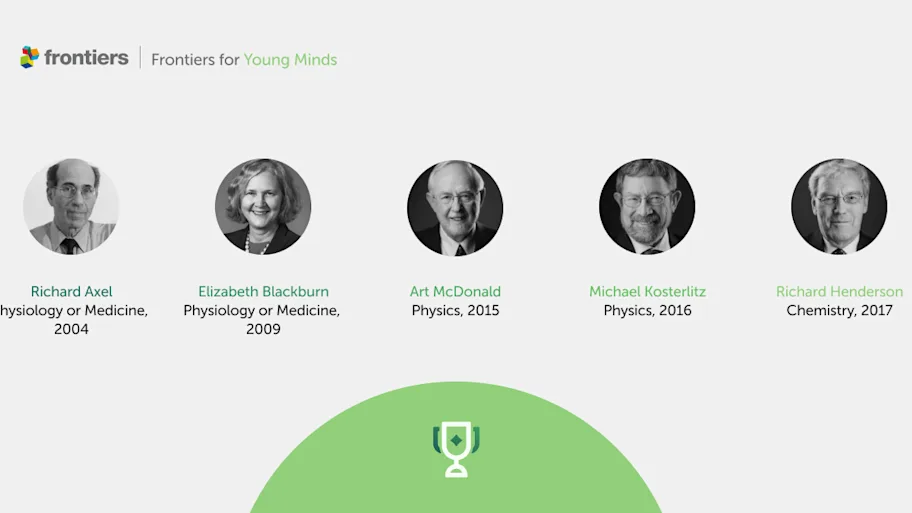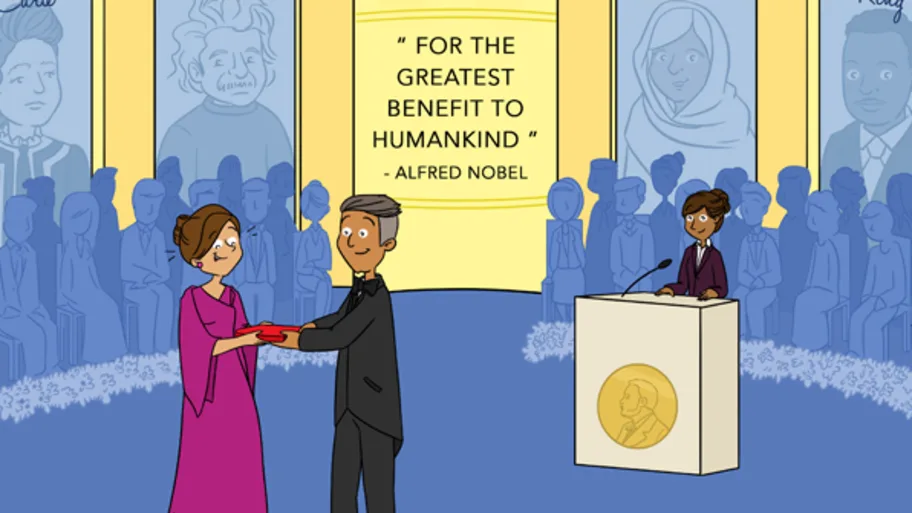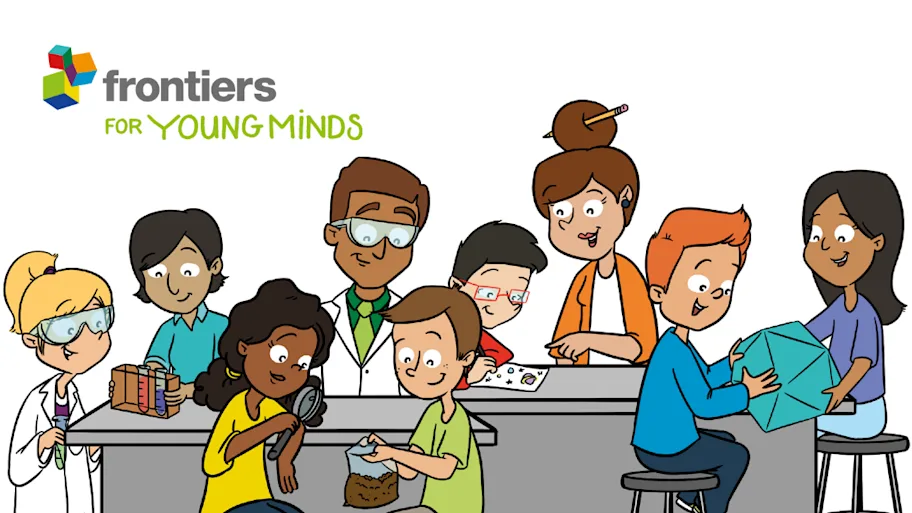
- Science News
- Featured news
- Open science platform Frontiers publishes new Nobel Collection articles
Open science platform Frontiers publishes new Nobel Collection articles
Five more Nobel Prize winners publish free scientific article collection for children
Last year in September, as many young people prepared to go back to school, the very first Nobel Collection, featuring articles written by Nobel Laureates, was launched by Frontiers for Young Minds (FYM), a unique, completely free, open access kids' science journal. The Collection has been a huge success, having been viewed over half a million times online.
Today marks the release of the second Nobel Collection articles, connecting curious minds of all ages to exceptionally high-caliber scientists and offering exciting insights into the world of real science. As for all FYM publications, each of the five articles has been written for young people aged 8 to 15 and has been reviewed by kids themselves to ensure they are understandable, fun, and engaging.

Photo credit: Frontiers
Freely available to people everywhere from today, the 2022 Nobel Collection aims to ignite interest in various fields, and is comprised of the following contributions:
Gravitational Waves – a new window on the Universe, written by Barry C. Barish, awarded The Nobel Prize in Physics in 2017. Did you know that the phenomenon of gravitational waves was predicted by Einstein's theory of General Relativity? In this article, everyone can discover how the gravitational waves were eventually detected, how this proved Einstein's theory, and what this means for what we can learn about the universe from black holes and star collisions.
AIDS: facts, fiction, and future, written by Françoise Barré-Sinoussi, awarded The Nobel Prize in Physiology or Medicine in 2008. Did you know that since the first cases of AIDS were reported in the 1980s, now almost 80 million have been infected with HIV and 45% have died? In this article, readers find out how HIV works in stages to become AIDS, how it was identified, and why we must break social stigmas around HIV/AIDS if we are to create an AIDS-free world generation.
Human riddles in behavioral economics, written by Daniel Kahneman, awarded The Nobel Prize in Economic Sciences in 2022. Did you know that humans focus on changes in their financial state (gains and losses) not their overall wealth when gambling, and that they care more about losing than winning? In this article, dive into the fascinating theory which unified and explained human decision-making in uncertain situations, and how this contributed to the field of behavioural economics in financial situations.
Distant planets and big promises: how to detect exoplanets and whether they have life, written by Michel Mayor, awarded The Nobel Prize in Physics in 2019. Did you know that the probability of life on other planets is actually quite high? In this article, young readers will be fascinated by how experts search for planets outside our solar system, how the first measured exoplanet orbiting a sun-like star was discovered, and what it will take to discover life on other planets in the future.
Sparks in the brain: the story of ion channels and nerve cells, written by Bert Sakmann, The Nobel Prize in Physiology or Medicine in 1991. Did you know that all cells in your body are both individual units, with their own functions, and part of a whole multicellular organism, such as the brain or heart, which must work in a coordinated way? In this article, it is revealed how cells communicate using a chemical messenger substance, how the electrical ions which enter and exit cells overcome the membrane barrier, and what this means for understanding many important functions in our bodies.
The series of Nobel Laureate contributions will continue into next year and beyond to grow this valuable educational resource in order to motivate young people and encourage analytical thought and imagination at the same time.
Commenting on the Collection release, Laura Henderson, head of public outreach program at Frontiers, said:
“Nobel Prize winners are great inspirations for our young audience – not only in sharing their amazing discoveries and their pathways through science, but in giving kids the revelation that even the best in their fields aren’t all-knowing - as scientists they learn with each discovery. We’re thrilled to connect young minds with some of today’s most distinguished scientists, and we are immensely grateful to the Laureates for providing superb learning material which is now available to anyone around the world.”
To find out more, watch this video.
To explore The Nobel Collection articles, visit here.
About Frontiers for Young Minds
Frontiers for Young Minds (FYM) is a unique, completely free, open access kids' science journal that publishes articles written by top researchers and peer reviewed by children aged 8-15. The journal features over 1,000 articles with over 27 million views and downloads, produced by 2,925 authors, mentored by 790 scientists and reviewed by 5,250 youngsters from 60+ countries worldwide. FYM now publishes in seven subject areas (Astronomy and Physics, Biodiversity, Chemistry and Materials, Earth & its Resources, Human Health, Mathematics, Neuroscience & Psychology – with Engineering and Technology to come) with materials available in English, Hebrew and Arabic. FYM is a Winner of the Falling Walls Science Engagement category, presenting their pitch at Berlin’s Science Summit in November 2022. The Nobel initiative is part of Frontiers’ commitment to the United Nations Sustainable Development Goals and Goal 4 – Quality Education in particular.
About Frontiers
Frontiers is the 3rd most-cited and 6th largest research publisher. We publish groundbreaking discoveries by the world's top experts. Scientists empower society and our mission is to accelerate scientific discovery by making science open. We place the researcher at the center of everything we do and enable the research community to develop the solutions we need to live healthy lives on a healthy planet. Featuring custom-built technology, artificial intelligence, and rigorous quality standards, our research articles have been viewed more than 2.1 billion times, reflecting the power of research that is open for all.

Frontiers is a signatory of the United Nations Publishers COMPACT and the above initiative is part of Frontiers’ commitment to the United Nations Sustainable Goal 4: Quality Education.






